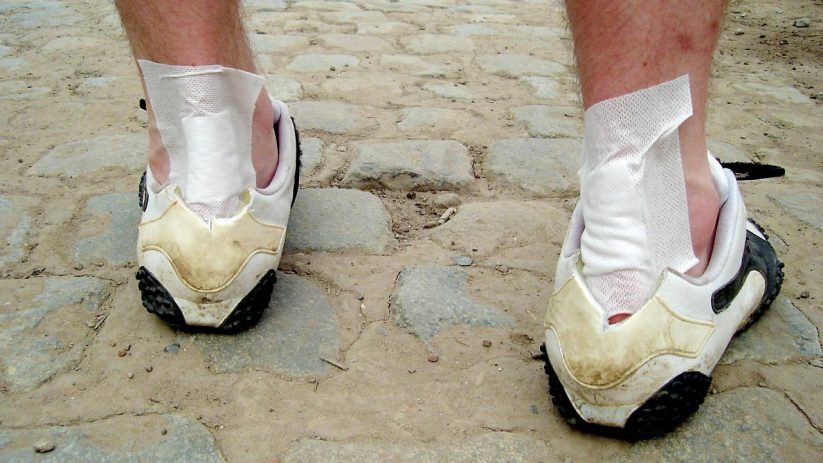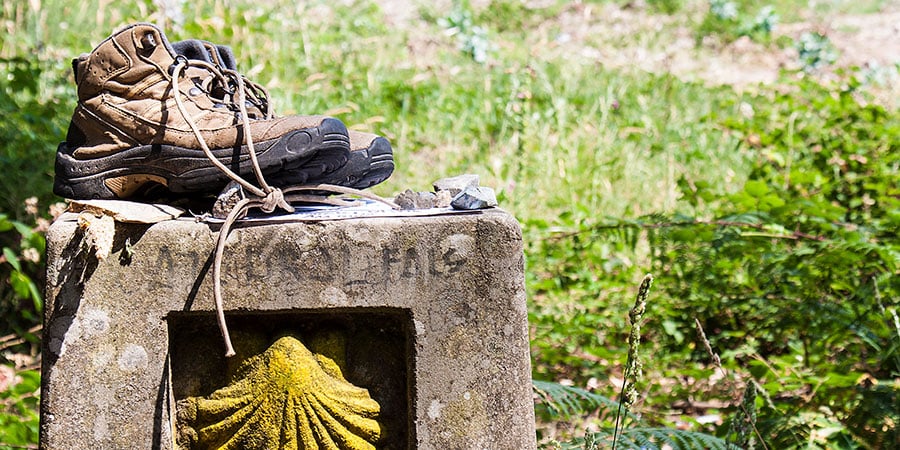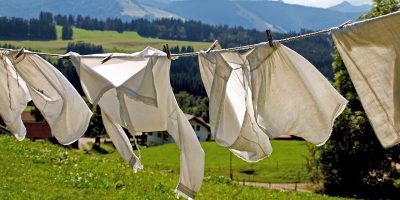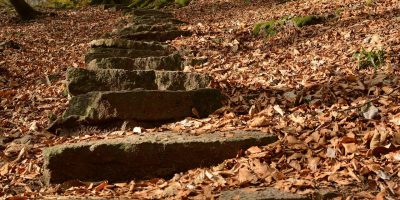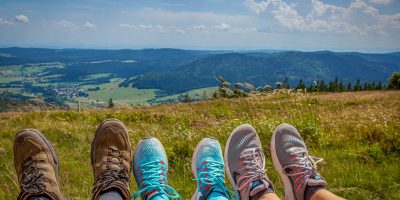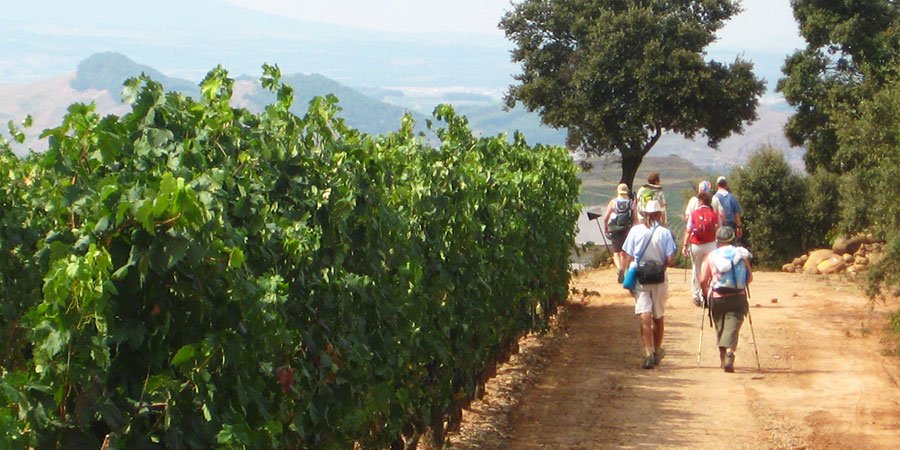Camino Preparation Tip #5: Heel Pain
Preparing to walk the Camino de Santiago this year? Tip #5 Peter from D-Peter Health & Fitness Clinic in Dublin continues with his Camino Fitness Plan. This week he focuses on heel pain.
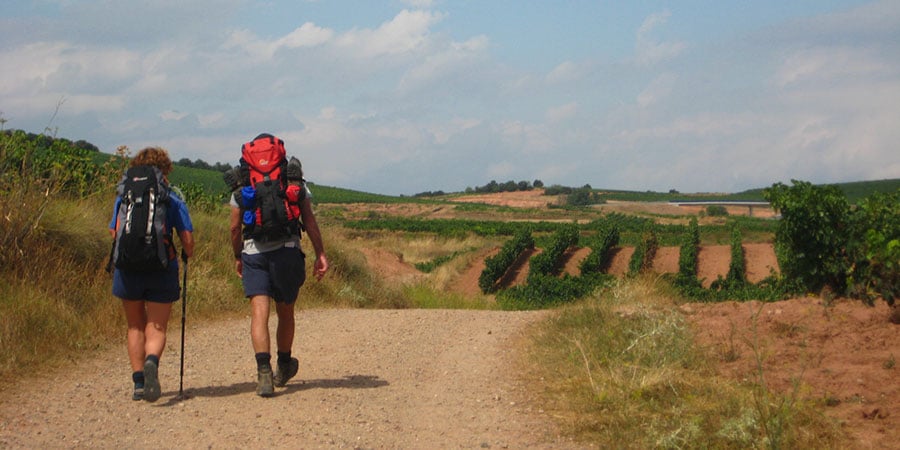
By Peter
Plantar Fasciitis is a very common and painful foot condition and can slow down your active lifestyle. It occurs when the long, flat ligament along the bottom of the foot stretches and develops small tears that cause the ligament to become inflamed.
This is a repetitive injury often caused by hiking, walking/ running long durations throughout the day, and presents itself as chronic heel pain. The pain is often described as being dull aching or sharp.
While it is possible to reduce the pain temporarily through stretching, applying ice packs, and taking anti-inflammatory medications, you need to give your body time to heal and takes steps to prevent a recurrence.
Is Heel Pain Stopping You?
The pain is described as being dull aching or sharp and can be reproduced by flexing the toes upwards (dorsiflexion) and tensing the fascia.
Although the fascia is invested with countless sturdy ‘cables’ of connective tissue called collagen fibers, it is certainly not immune to injury. In fact, about 5 to 10 per cent of all athletic injuries are inflammations of the fascia, an incidence rate that in the United States would produce about a million cases of plantar fasciitis per year, just among active people including hikers.
Rock climbers, runners, joggers, and athletes are also prone to plantar problems, as are non-athletic people who spend a lot of time on their feet or suddenly become active after a long period of lethargy. A recent study found that over 50 per cent of people who suffer from plantar fasciitis are on their feet nearly all day.
Plantar Fasciitis usually develops gradually. Heel pain may only occur when taking the first steps after getting out of bed or when taking the first steps after sitting for a long period of time.
If the plantar fascia ligament is not rested, the inflammation and heel pain will get worse. Other conditions or aggravating factors, such as the repetitive stress of walking, standing, running, or jumping, will contribute to the inflammation and pain. In some cases, the inflamed ligament may not heal because many people who have plantar fasciitis do not completely stop the aggravating activity.
In athletes, a number of factors are associated with the development of plantar fasciitis. These factors can lead the athlete to change his or her gait (the way the feet strike the ground), which can cause symptoms and injury. Risk factors for athletes include:
- Biomechanical factors, such as decreased flexibility in the foot and ankle, imbalances in muscle strength (muscles in one leg or foot are weaker than the other), abnormal foot mechanics (when stepping down), and tightness in the Achilles tendon.
- The repetitive nature of sports activities and improper training.
- Rapidly increasing the number of miles run.
- Running on steep hills.
- Wearing hiking shoes that are worn out.
- Wearing hiking shoes that do not have a cushioned sole or enough arch support.
- Abruptly changing the intensity or duration of the running routine.
The traditional remedies for plantar fasciitis include stretching the calf, massaging, decreasing one’s training, losing weight, purchasing better-fitting shoes (with a raised heel and arch support), icing the sore heel, and taking ibuprofen.
Tip 1. Wear lightweight, breathable shoes (that fit!)
The best shoes for lightweight backpacking are trail-runners, cross-trainers and lightweight boots. When choosing a hiking shoe look for one that is lightweight, breathable, flexible and (most importantly) fits your foot. Traditional heavy leather boots are not good footwear because they are stiff and abrasive to the feet. Buy your shoes one size larger than you would normally wear to make room for foot swelling, which can happen on longer hikes.
Tip 2. Wear Socks That Provide Enough Cushion (But Not So Thick They Overheat Your Feet)
When choosing hiking socks you want a combination of cushion and breathability.Too thin and they won’t provide enough protection from abrasion and impact against your shoes. Too thick and your feet will sweat like a sauna. Most backpackers I know wear lightweight hiking socks or running socks made from merino wool (and sometimes synthetic materials like nylon, Coolmax or blends).
Tip 3. Clean Your Feet Often (And Dunk Them In Cold Creeks Whenever Possible)
Nothing in the world feels better on swollen, achy feet than getting dunked in a nice cold creek! The flowing water massages your tootsies, increases circulation, numbs the pain, reduces inflammation and makes everything feel good for a little while.
As an added benefit, it cleans off the abrasive grime (dirt + sweat) that tends to accumulate on your feet as an unfortunate side-effect of wearing breathable shoes with lots of mesh panels.
Too bad there is not always a good creek available. But it’s still a good idea to clean your feet frequently. When there is no convenient water source nearby I use a moistened bandana to wipe off the grime.
Keeping your feet clean and smooth and free of gunk goes a long way toward preventing hot spots and blisters because it eliminates a big source of friction between your feet and socks (dirt).
Continue reading our preparation and fitness plan by D-Pete:
- Shin Splints, Camino Preparation Tip #6
- Camino Fitness Plan – 6-month Preparation Programme
- Know yourself, Camino Preparation Tip #1
- T-Rex Syndrome, Camino Preparation Tip #2
- How to prevent chafing, Camino Preparation Tip #3
- Motivation, Camino Preparation Tip #4
Contact us on the form below if you have any questions about walking the Camino:
